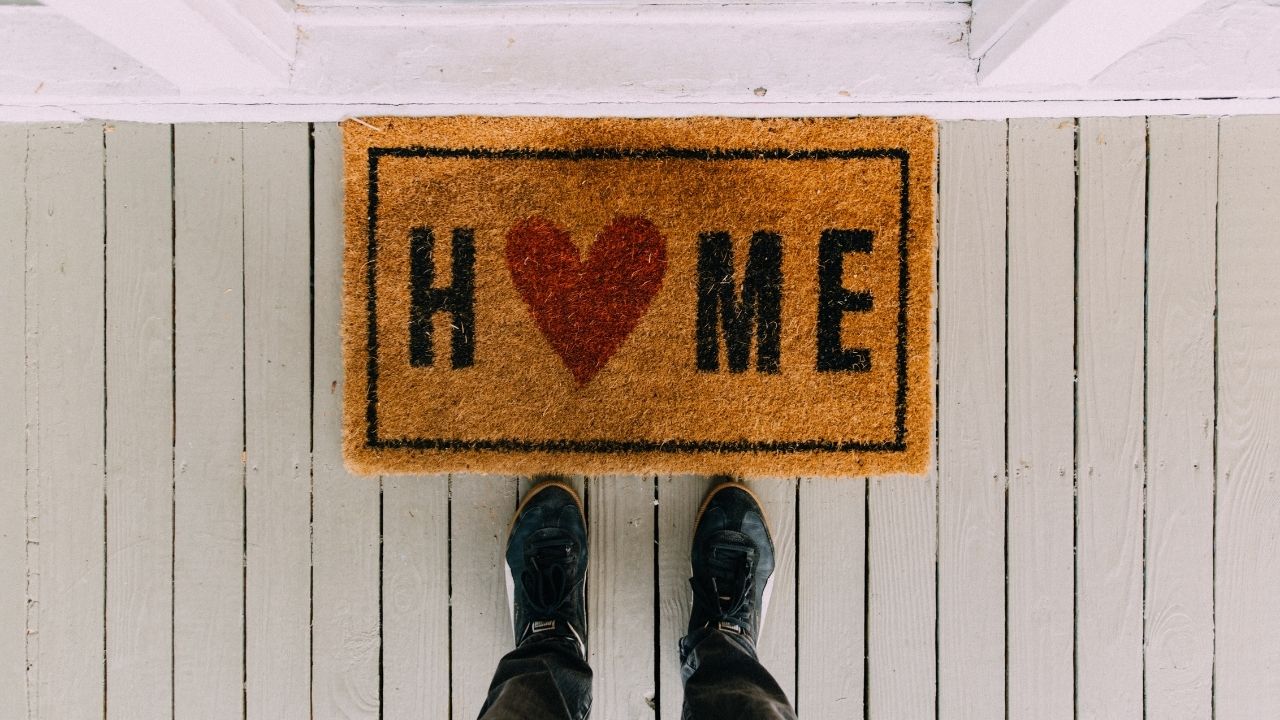Lifestyle
Make the Most of Your Small Space Before Your Open House

More people want to live smaller and more efficiently. Tiny homes have become increasingly popular as households look to alleviate the added stress of simply having too much “stuff.”
As a happy byproduct, most people who live in smaller spaces end up with no credit card debt. They also leave a smaller carbon footprint on the environment.
If you are in the market to sell your house, you might need to rethink some of your design ideas as you prepare for an open house. Real estate agents will occasionally hire a professional staging company to rearrange the space, place temporary new furniture, and remove the bulkier pieces altogether.
But if you decide to sell your house on your own, there are ways you can make your space more efficient as well as appealing to the eyes of potential buyers. We’ve gathered six tips to help you out.
Avoid Dark Colors on the Wall
If at all possible, avoid using dark colors on the walls. This can dull the room and reduce the effects of any natural light the space might otherwise have. If you feel compelled to go a shade or two darker when you paint, try doing only a single wall to use as an accent.
Brighten Up Your Home
Light can do wonders for enhancing the apparent size of your apartment or house. Yes, you will be playing a trick on the eyes to make rooms appear bigger than they actually are.
The illusion is best executed by hanging mirrors throughout the space. Use of an oversized mirror that reflects natural light from a window, for example, can create a sensation of air, of breath, even a touch of the grandiose in the smallest of spaces.
Use Less Bulky Furniture
One of the main reasons that small spaces feel even smaller than they are is when they’re overcrowded with furniture. Many of us tend to utilize bigger and bulkier pieces, such as bed frames that include dresser drawers to help with extra storage.
Bigger pieces tend to make a room feel more congested, though.
There is nothing wrong with doing a little de-cluttering to simplify your life and your space for yourself. Take a look around your house and see which pieces are largely serving as decorative rather than functional.
Then go shopping for items that are slimmer but may also be more appropriate for your on-site storage needs.
Don’t Forget About the Bathroom
If you’re operating in a small house or apartment, you probably also have a diminutive bathroom. One trick to make the space seem larger is to hang a clear shower curtain instead of one with a pattern.
Don’t be tempted to buy a cheap one that develops a film after only a few showers, however. Spend a little extra to purchase a high-quality liner instead. That investment will go a long way.
Get Creative with Storage
This might seem counterintuitive to what we said earlier about getting creative with storage, but it can be done without overstuffing any room of the house. A headboard that adds extra shelves, for instance, is a great option that can serve as a bookshelf or replace a nightstand.
Multi-tiered shelving that can be placed under the kitchen and bathroom sinks allows more storage in-house rather than shifting out. Plus, it will keep your cleaning products organized so you’ll be able to find things faster.
One of the best hacks is to use floating shelves. They are a great replacement for nightstands or bookshelves for removing unwanted clutter from the floor. This again boosts the sense of less clutter.
Choose Your Rugs and Drapes Wisely
Both rugs and drapes as home decor can shrink the ostensible size of a room, but you can be tactical about which drapes and rugs you choose. Drapes can actually encourage your gaze upward toward the source of light, and that makes a room feel more spacious. White, sheer curtains are a subtle and airy way to draw attention back to the light.
The same applies to rugs. In a small space, avoid using too many small ones. Try to place one large rug instead, because the size of the rug can influence the apparent size of the space.
No matter how small your home might be, there’s always a way to make the space feel less claustrophobic before an open house. You just have to get creative!
Lifestyle
Wanda Knight on Blending Culture, Style, and Leadership Through Travel

The best lessons in leadership do not always come from a classroom or a boardroom. Sometimes they come from a crowded market in a foreign city, a train ride through unfamiliar landscapes, or a quiet conversation with someone whose life looks very different from your own.
Wanda Knight has built her career in enterprise sales and leadership for more than three decades, working with some of the world’s largest companies and guiding teams through constant change. But ask her what shaped her most, and she will point not just to her professional milestones but to the way travel has expanded her perspective. With 38 countries visited and more on the horizon, her worldview has been formed as much by her passport as by her resume.
Travel entered her life early. Her parents valued exploration, and before she began college, she had already lived in Italy. That experience, stepping into a different culture at such a young age, left a lasting impression. It showed her that the world was much bigger than the environment she grew up in and that adaptability was not just useful, it was necessary. Those early lessons of curiosity and openness would later shape the way she led in business.
Sales, at its core, is about connection. Numbers matter, but relationships determine long-term success. Wanda’s time abroad taught her how to connect across differences. Navigating unfamiliar places and adjusting to environments that operated on different expectations gave her the patience and awareness to understand people first, and business second. That approach carried over into leadership, where she built a reputation for giving her teams the space to take ownership while standing firmly behind them when it mattered most.
The link between travel and leadership becomes even clearer in moments of challenge. Unfamiliar settings require flexibility, quick decision-making, and the ability to stay calm under pressure. The same skills are critical in enterprise sales, where strategies shift quickly and no deal is ever guaranteed. Knight learned that success comes from being willing to step into the unknown, whether that means exploring a new country or taking on a leadership role she had not originally planned to pursue.
Her travels have also influenced her eye for style and her creative pursuits. Fashion, for Wanda, is more than clothing; it is a reflection of culture, history, and identity. Experiencing how different communities express themselves, from the craftsmanship of Italian textiles to the energy of street style in cities around the world, has deepened her appreciation for aesthetics as a form of storytelling. Rather than keeping her professional and personal worlds separate, she has learned to blend them, carrying the discipline and strategy of her sales career into her creative interests and vice versa.
None of this has been about starting over. It has been about adding layers, expanding her perspective without erasing the experiences that came before. Wanda’s story is not one of leaving a career behind but of integrating all the parts of who she is: a leader shaped by high-stakes business, a traveler shaped by global culture, and a creative voice learning to merge both worlds.
What stands out most is how she continues to approach both leadership and life with the same curiosity that first took her beyond her comfort zone. Each new country is an opportunity to learn, just as each new role has been a chance to grow. For those looking at her path, the lesson is clear: leadership is not about staying in one lane; it is about collecting experiences that teach you how to see, how to adapt, and how to connect.
As she looks to the future, Wanda Knight’s compass still points outward. She will keep adding stamps to her passport, finding inspiration in new cultures, and carrying those insights back into the rooms where strategy is shaped and decisions are made. Her legacy will not be measured only by deals closed or positions held but by the perspective she brought, and the way she showed that leading with a global view can change the story for everyone around you.
-

 Tech5 years ago
Tech5 years agoEffuel Reviews (2021) – Effuel ECO OBD2 Saves Fuel, and Reduce Gas Cost? Effuel Customer Reviews
-

 Tech6 years ago
Tech6 years agoBosch Power Tools India Launches ‘Cordless Matlab Bosch’ Campaign to Demonstrate the Power of Cordless
-

 Lifestyle6 years ago
Lifestyle6 years agoCatholic Cases App brings Church’s Moral Teachings to Androids and iPhones
-

 Lifestyle5 years ago
Lifestyle5 years agoEast Side Hype x Billionaire Boys Club. Hottest New Streetwear Releases in Utah.
-

 Tech7 years ago
Tech7 years agoCloud Buyers & Investors to Profit in the Future
-

 Lifestyle5 years ago
Lifestyle5 years agoThe Midas of Cosmetic Dermatology: Dr. Simon Ourian
-

 Health7 years ago
Health7 years agoCBDistillery Review: Is it a scam?
-

 Entertainment6 years ago
Entertainment6 years agoAvengers Endgame now Available on 123Movies for Download & Streaming for Free
